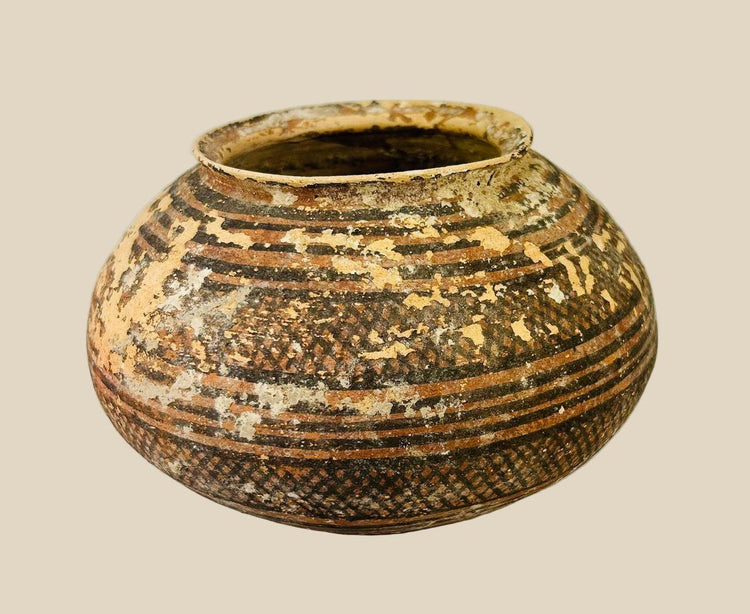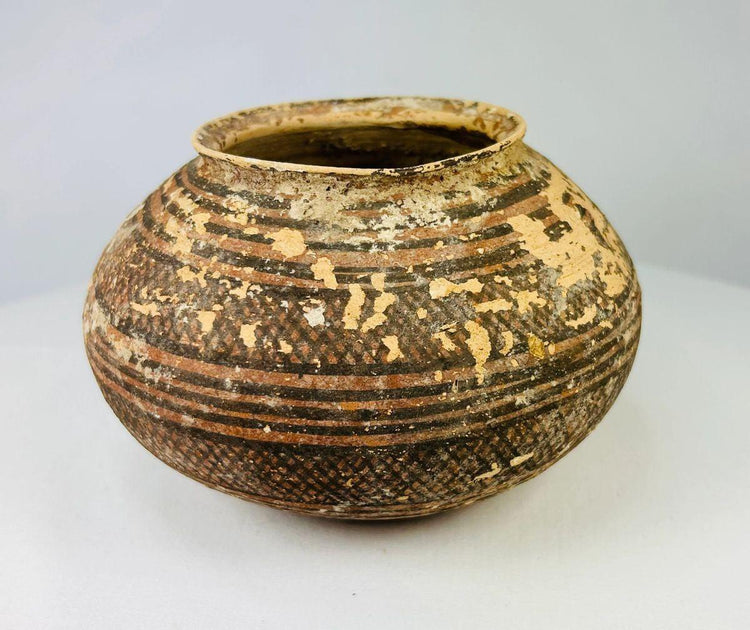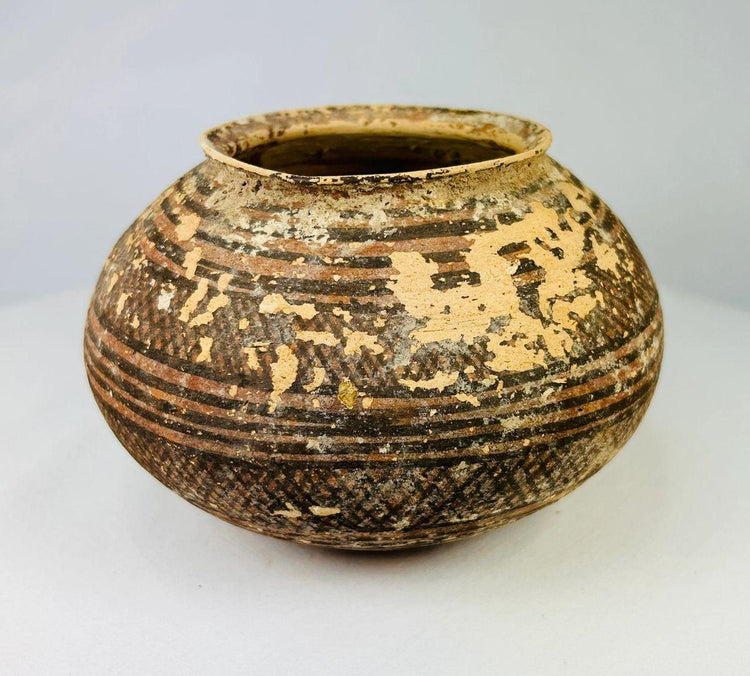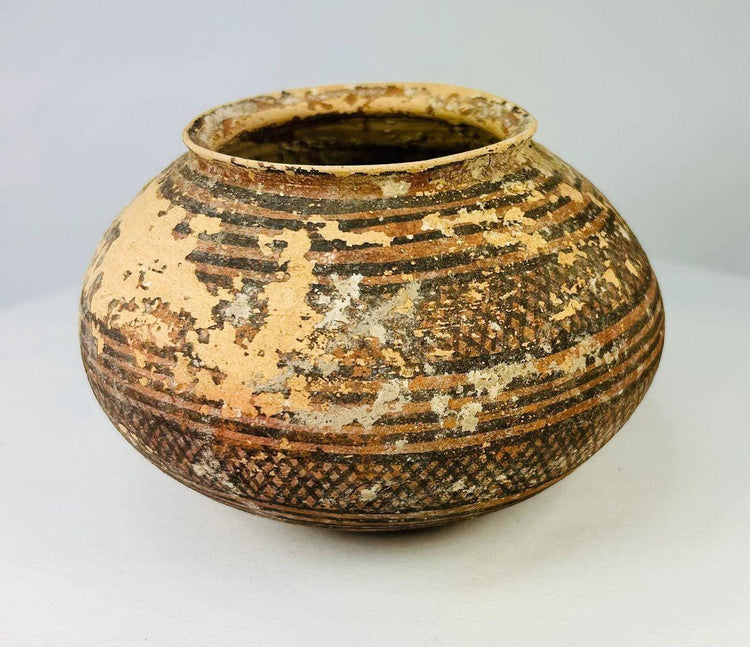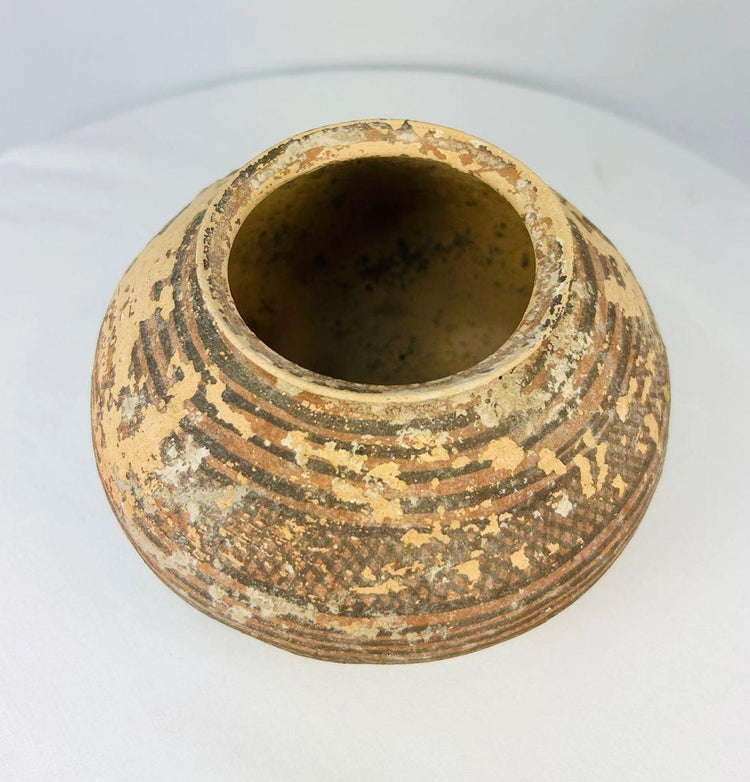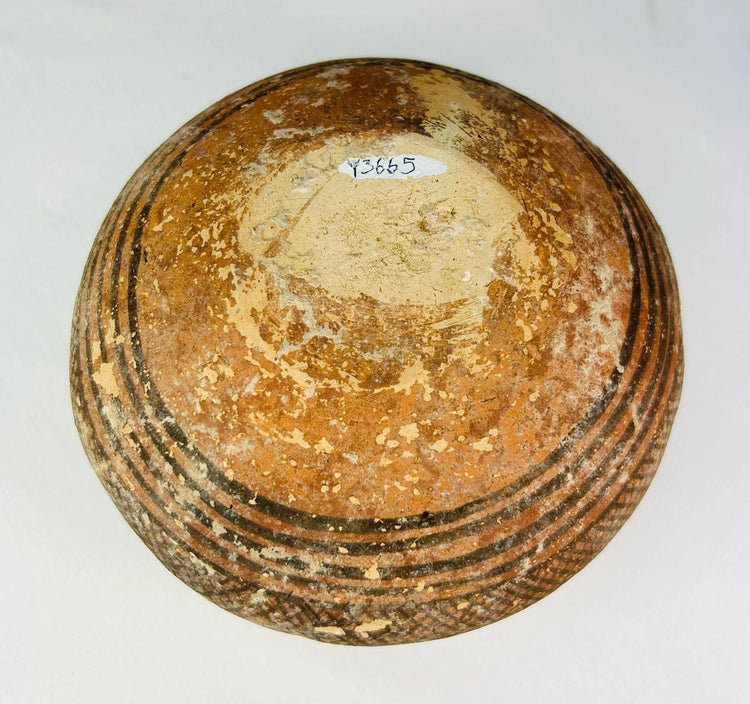Indus Valley | Painted Terracotta Jar | Circa 3rd Millennium BCE
Description
More
Less
Historical Context & Origin
Region: Indus Valley Civilization (modern-day Pakistan and Northwest India)
Material: Terracotta clay with painted geometric decoration
Period: 3rd Millennium BCE
Description
This finely crafted pottery vessel is a striking example of Harappan artistry, created by one of the world’s earliest and most advanced urban societies. Its bulbous body and narrow neck made it practical for storing liquids, grains, or ritual offerings, while its elegant form reflects both utility and aesthetic refinement. The surface is decorated with painted geometric motifs—cross-hatching, parallel bands, and stylized linear designs—applied in black and red-brown pigments over a natural terracotta base. These symbolic patterns are characteristic of Harappan pottery and reveal the spiritual and artistic values of the Indus Valley culture.
Features
- Bulbous body with narrow neck, suited for storage and ritual use
- Painted geometric designs in black and red-brown hues
- Terracotta base with natural patina from centuries of age
- Characteristic Harappan motifs reflecting symbolic meaning
- Compact, elegant size ideal for both functional and ceremonial use
Cultural Significance
Pottery was central to daily and ritual life in the Indus Valley Civilization. Vessels such as this served a dual purpose: functional objects within the household and symbolic tools in ceremonial or funerary practices. The painted geometric designs likely conveyed ritual significance, embodying themes of balance, protection, and harmony. As one of the oldest known urban societies, the Harappans elevated pottery into an artistic and spiritual medium, and pieces like this remain invaluable connections to their world.
Condition
The vessel survives in remarkable condition for its age, with natural weathering visible in areas of the painted decoration. The patina and minor wear enhance its authenticity and historical character. Despite some fading, the structural integrity of the vessel is excellent, preserving its form and artistry for modern appreciation.
Dimensions (approximate)
Diameter: 6 in
Age
Over 4,000 years old
Description
Historical Context & Origin
Region: Indus Valley Civilization (modern-day Pakistan and Northwest India)
Material: Terracotta clay with painted geometric decoration
Period: 3rd Millennium BCE
Description
This finely crafted pottery vessel is a striking example of Harappan artistry, created by one of the world’s earliest and most advanced urban societies. Its bulbous body and narrow neck made it practical for storing liquids, grains, or ritual offerings, while its elegant form reflects both utility and aesthetic refinement. The surface is decorated with painted geometric motifs—cross-hatching, parallel bands, and stylized linear designs—applied in black and red-brown pigments over a natural terracotta base. These symbolic patterns are characteristic of Harappan pottery and reveal the spiritual and artistic values of the Indus Valley culture.
Features
- Bulbous body with narrow neck, suited for storage and ritual use
- Painted geometric designs in black and red-brown hues
- Terracotta base with natural patina from centuries of age
- Characteristic Harappan motifs reflecting symbolic meaning
- Compact, elegant size ideal for both functional and ceremonial use
Cultural Significance
Pottery was central to daily and ritual life in the Indus Valley Civilization. Vessels such as this served a dual purpose: functional objects within the household and symbolic tools in ceremonial or funerary practices. The painted geometric designs likely conveyed ritual significance, embodying themes of balance, protection, and harmony. As one of the oldest known urban societies, the Harappans elevated pottery into an artistic and spiritual medium, and pieces like this remain invaluable connections to their world.
Condition
The vessel survives in remarkable condition for its age, with natural weathering visible in areas of the painted decoration. The patina and minor wear enhance its authenticity and historical character. Despite some fading, the structural integrity of the vessel is excellent, preserving its form and artistry for modern appreciation.
Dimensions (approximate)
Diameter: 6 in
Age
Over 4,000 years old
You May Also Like


















